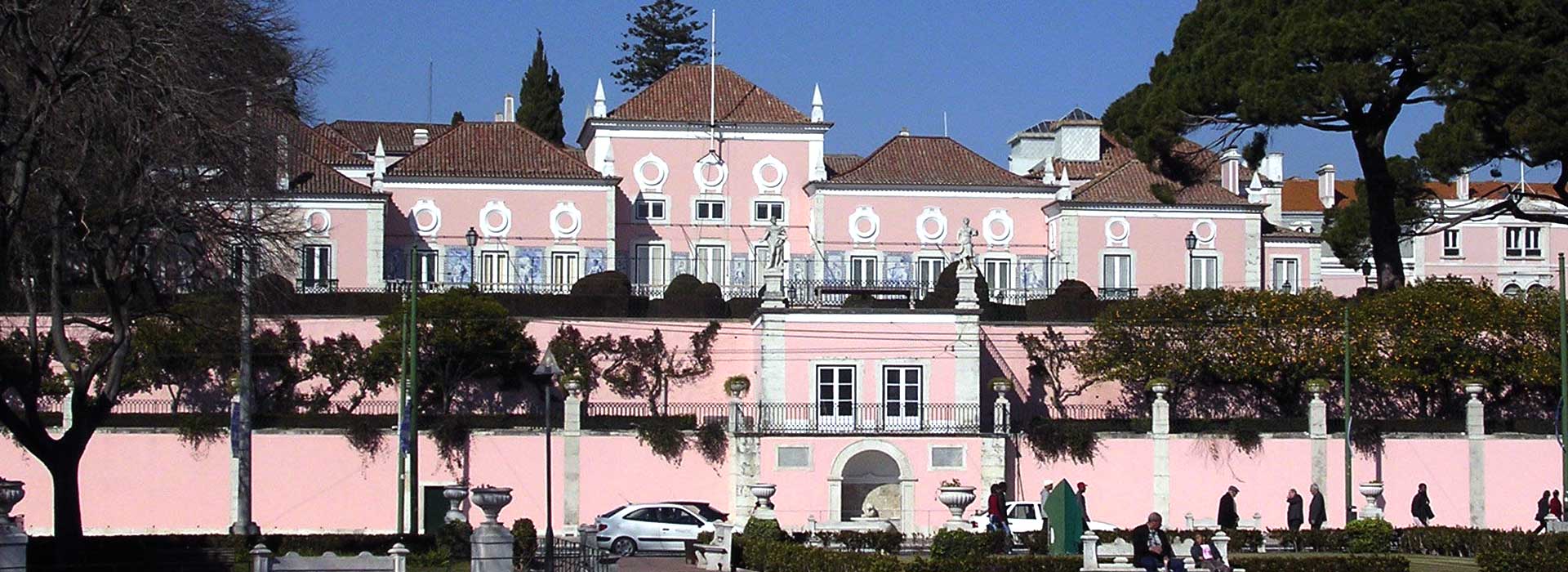
Belém Palace
Belém Palace holds a significant place in the nation's history and serves as the official residence of the President of Portugal. Situated in the historic Belém district, the palace is renowned for its architectural splendour and cultural significance.
Originally built as a convent in the 16th century, Belém Palace underwent extensive renovations in subsequent centuries, evolving into its current neoclassical form. Its majestic and distinctively pink façade and sprawling grounds exude grandeur, attracting visitors from far and wide.
Steeped in tradition and elegance, Belém Palace offers a captivating glimpse into Portugal's rich heritage. The Palácio Nacional de Belém is the official residence of Portugal's Presidents and was home to the Portuguese Royal family from 1723 right up to the end of the monarchy in 1910. Visitors can explore its opulent interiors, adorned with exquisite furnishings and historic artefacts, while strolling through manicured gardens that provide a tranquil retreat amidst the bustling city.
As a symbol of national pride and heritage, Belém Palace stands as a testament to Portugal's enduring legacy and is a must-visit destination for history enthusiasts and architecture aficionados alike.
There are five guided tours each Saturday. However, there is a museum adjoining the palace which has full-time opening hours. A Changing of the Guard ceremony is held at eleven o’clock on the third Sunday of each month, performed by the Belém National Palace Guard of Honour. The presence of the president is announced by the hoisting of the presidential flag on the palace's main façade.
TOP LISBON TOURS
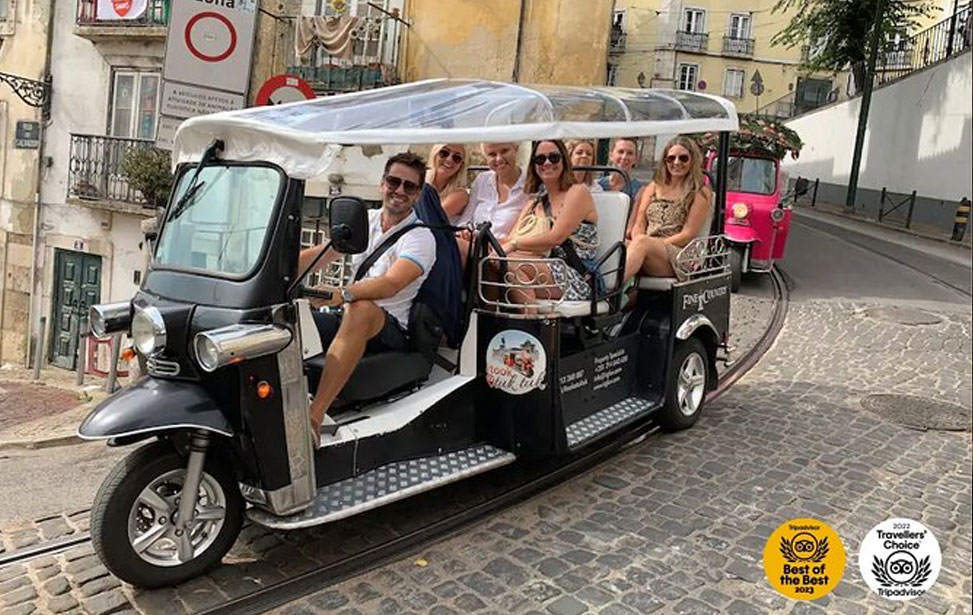
True 4 Hour TukTuk Tour of Lisbon
Experience Lisbon efficiently with a private half-day tuk-tuk tour, perfect for those seeking an eco-friendly way to explore the city. Personalise your itinerary and discover top attractions such as the historic Bairro Alto neighbourhood, the stunning Jerónimos Monastery and the breathtaking Miradouro da Senhora do Monte. Travel beyond the city centre to uncover multiple neighbourhoods while covering more ground quickly. This private tour offers flexibility and an intimate experience, allowing you to soak in Lisbon's vibrant atmosphere and iconic landmarks while enjoying the comfort of your private tuk-tuk.
(4,314) | 4 Hr | ✔ Free Cancellation
Check Availability
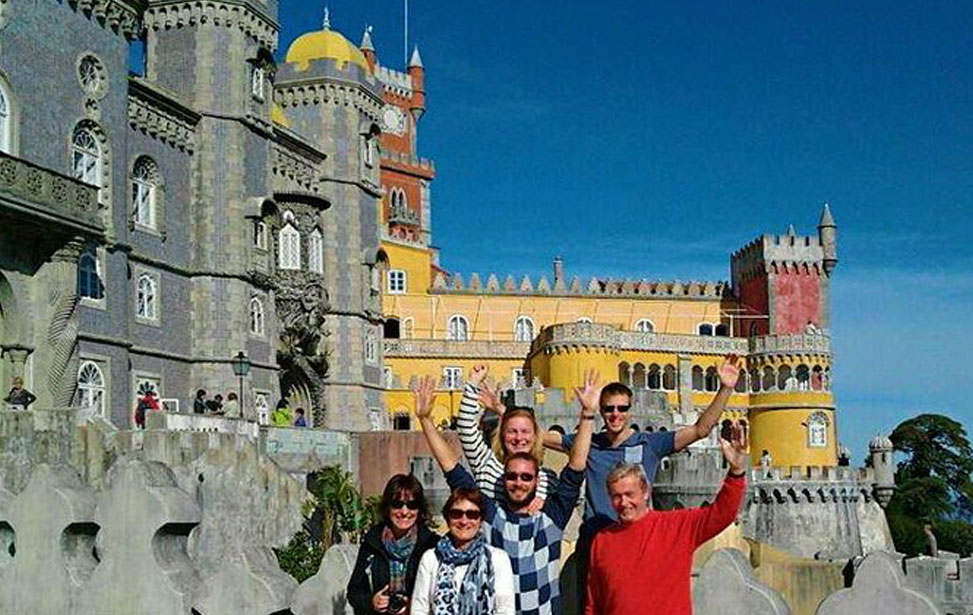
Full-Day Tour Best of Sintra and Cascais from Lisbon
Discover the enchanting beauty of Sintra on a full-day small-group tour from Lisbon. Explore the region's UNESCO-listed sites, including the majestic Pena Palace and charming Sintra Village. Witness stunning views from Cabo da Roca, Europe's westernmost point, and take in the coastal allure of the picturesque fishing village of Cascais. Enjoy personalised attention from your guide throughout this intimate experience, limited to eight people. Round-trip transportation from your Lisbon hotel is included, ensuring a seamless journey. Experience the romantic landscape of Sintra and Cascais on this unforgettable tour.
(753) | 8 Hr | ✔ Free Cancellation
Check Availability
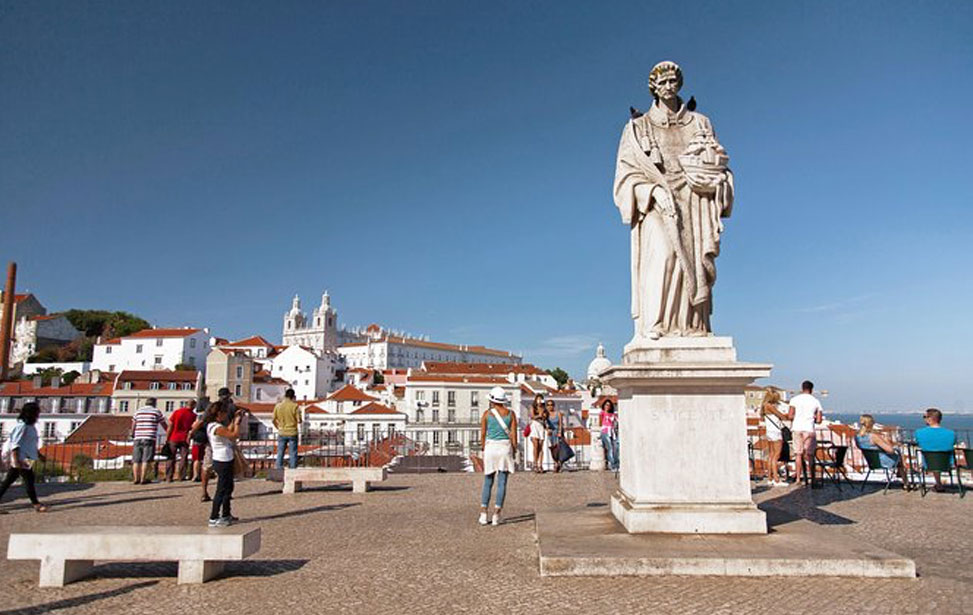
Private City Tour: Highlights of Lisbon
Explore the best of Lisbon on this private tour with an experienced guide. Journey through Portugal's capital, learning about its rich history while visiting top landmarks. Travel efficiently in an air-conditioned vehicle and discover historic districts like Chiado, Alfama, Baixa, and Belem on foot. Choose a morning or afternoon departure and enjoy convenient pickup and drop-off at your Lisbon hotel or cruise terminal. Taste the world-renowned pastel de Belém and immerse yourself in the charm of Lisbon. A private guide and vehicle provide a personalised experience as you uncover the highlights of the city.
(616) | 4 Hr | ✔ Free Cancellation
Check Availability
History
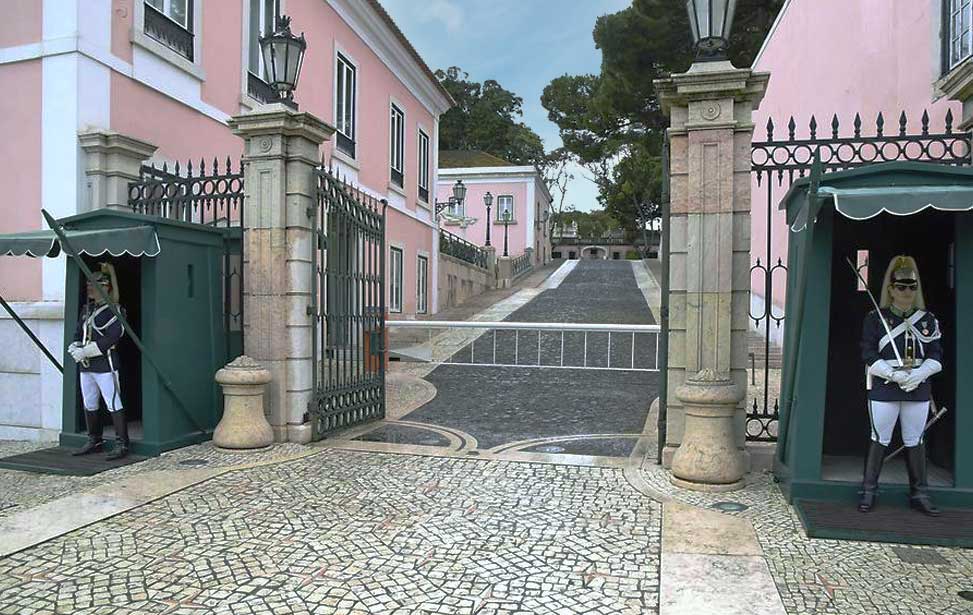
Sentries at the gates of the Belém Palace

THE PALACE
Once inside ascending the stone staircase, past the stone portico, one enters the famous Sala das Bicas where the guests of the president give interviews to the media. The floor of this reception hall is made of black and white marble and has an impressive painted wooden ceiling. The walls are adorned with polychromatic azulejo tiles and jasper busts representing Roman emperors. Here also are two drinking fountains which give the room its name. The room is illuminated by an impressive bronze chandelier. Black tapestries emblazoned with the crest of Dom João V complete the rooms decoration.
The room to the right of the Sala das Bicas is the Dining Room which is an addition to the original building. On the walls, there's a painting representing the five senses; sight, hearing, touch, taste and smell. Between 1980 and 1985 the room was used as a museum to display gifts presented to President of the Republic Ramalho Eanes. The room returned to its original function following the end of his presidency.
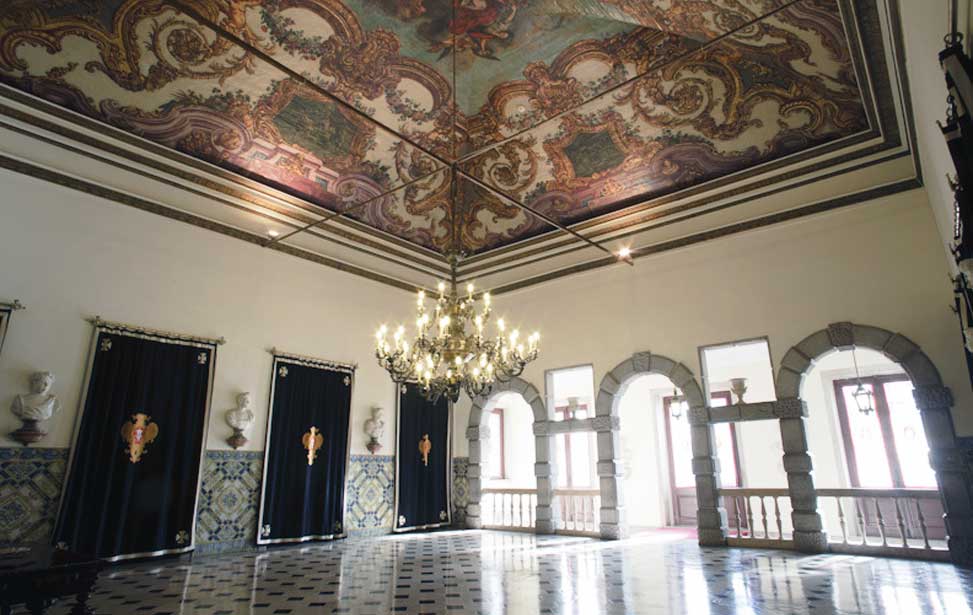
Sala das Bicas
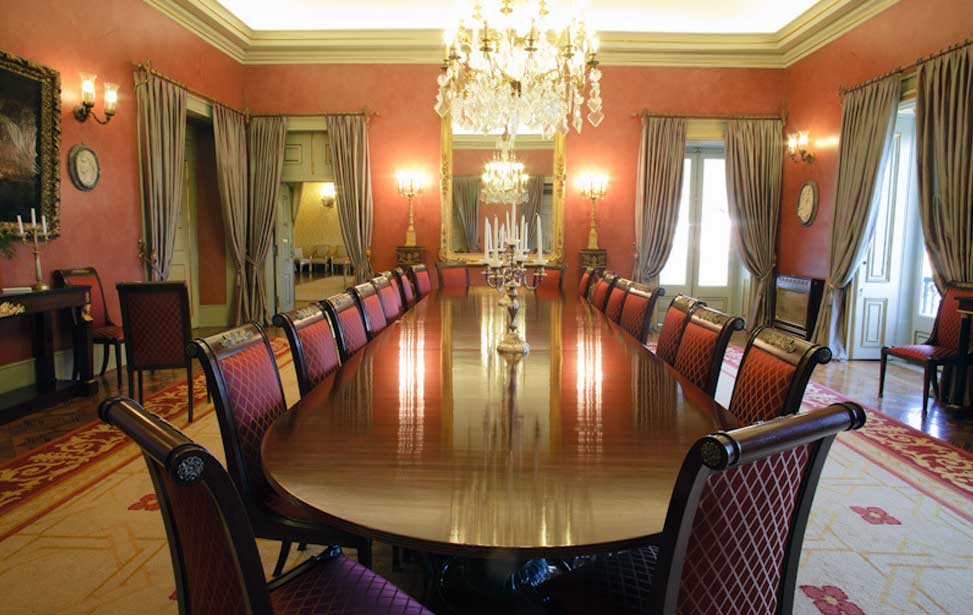
Dining Room
The Sala dos Embaixadores (Ambassadors Room), also referred to as the Sala Azul or Blue Room is where newly elected members of the government are sworn in and foreign ambassadors deliver their credentials to the President of the Republic. The room has an impressive panelled ceiling with a large crystal chandelier as its centrepiece. Adding the Sala dos Embaixadores is the presidential cabinet room (Gabinete de Trabalho do Presidente da República). During the Portuguese monarchy, it was the King's bedroom. On the wall, one finds a painting of King Dom Carlos and on adjacent walls hangs paintings by Ricardo Viana depicting Sintra and the Alentejo. Behind the great desk is the president's chair fitting with lion heads on its armrests. The palace was colloquially known as the “lions’ den” in the 18th century; the symbol of both strength and wisdom. Leaving the cabinet room one steps outside and passes through the Patio das Damas or Ladies Patio.
Palace Guided Tours
Each Saturday: 10h30, 11h30, 14h30, 15h30 & 16h30.
(Security checks take place as you enter.)
Adult: €5.00, Consessionary: €3.50, Child Under 14: FREE

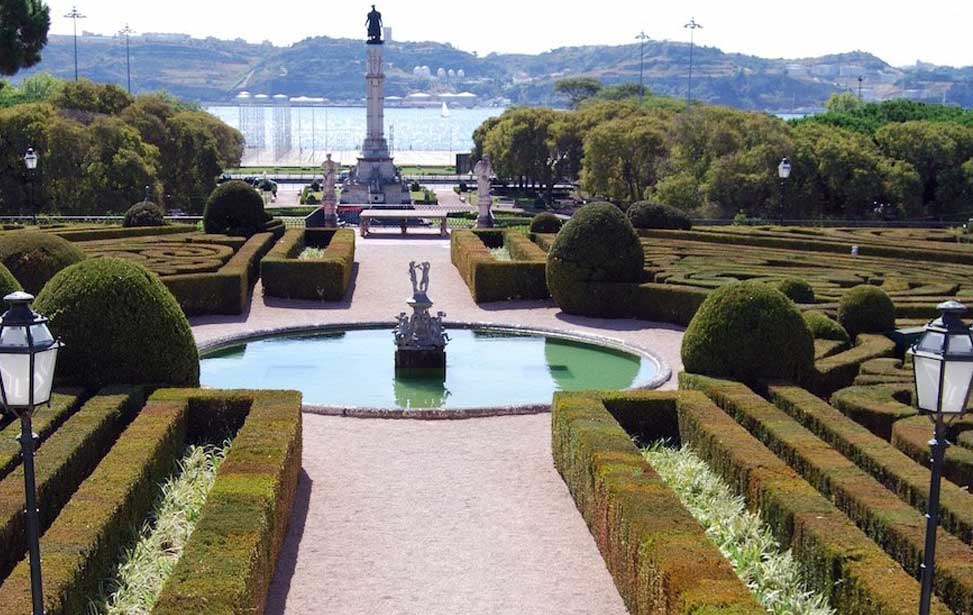
Belem Palace gardens
TOP BELÉM TOURS
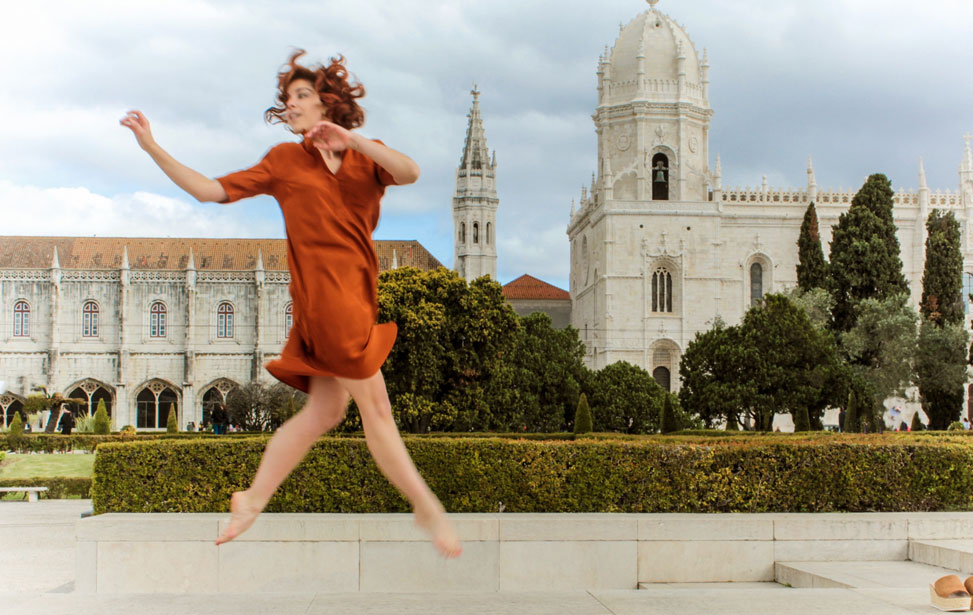
Belém Walking Tour and Jerónimos Monastery Ticket
Explore Lisbon's Age of Discoveries on this guided walking tour in Belém. Visit iconic sites like Belém Tower and enjoy skip-the-line access to the Jerónimos Monastery. Meet your guide in the Garden of Afonso de Albuquerque and travel back in time. Indulge in an authentic Pastéis de Belém and savour the famous egg tarts. Marvel at the late Gothic architecture of the UNESCO-listed Jerónimos Monastery.
Stroll along the river to the modern monument dedicated to Portuguese explorers. Enjoy breathtaking views where the Atlantic Ocean meets the Tagus River at Belém Tower. Create unforgettable memories and receive personalised recommendations for your Lisbon visit.
(233) | 5 Hr | ✔ Free Cancellation
Check Availability
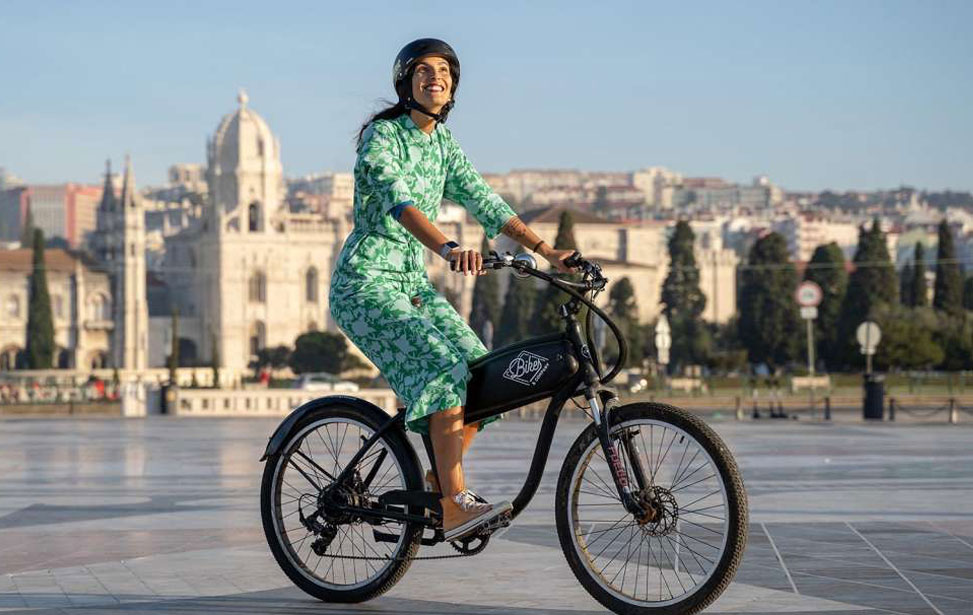
Electric Bike Tour by the River to Belém
Embark on a relaxing tour along Lisbon's riverside, starting in the cosmopolitan city centre. As you journey toward Belém, the vibrant energy of this European capital transitions into a more tranquil atmosphere. Travelling along the riverside provides an enjoyable journey filled with light, scenic landscapes, and lively city life. Belém offers history enthusiasts a glimpse into the Portuguese Discoveries, with its grand architecture and storied past. This neighbourhood was the launch point for many renowned explorers, shaping Portugal into the first global empire. This tour offers a harmonious blend of serenity and urban charm. Explore bustling riverfront esplanades, lush green fields, and talented local musicians, joggers, and artists capturing Lisbon's essence.
(388) | 3 Hr | ✔ Free Cancellation
Check Availability

Discovering Belém Tuk Tuk Tour
Explore the historic Belém district of Lisbon with a two-hour tuk-tuk tour along the Tagus River. Admire the magnificent Jerónimos Monastery and its beautiful church, showcasing Portugal's architectural brilliance.
Visit the iconic Belém Tower, where Portuguese explorers embarked on their 1500 journey that led to the discovery of Brazil. Discover the Padrão dos Descobrimentos monument, paying tribute to key figures of Portugal's Age of Discoveries.
Before leaving Belém, savour the delectable Pastéis de Belém, the famous custard tarts that are known worldwide. This tour offers a perfect blend of history, culture, and culinary delights, making it a must-experience in Lisbon.
(37) | 2 Hr | ✔ Free Cancellation
Check Availability
The Presidency Museum (Museu da Presidência da República)
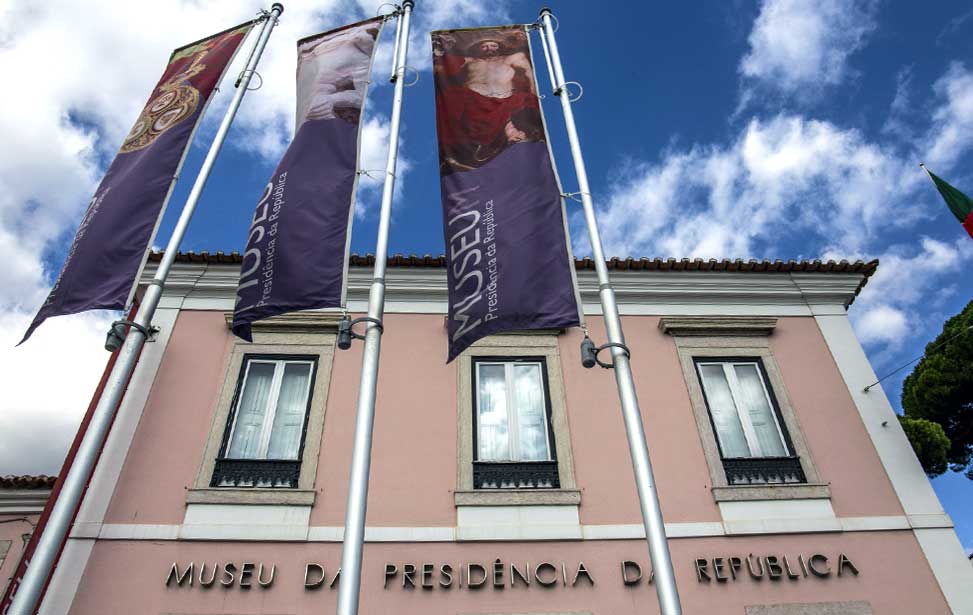
Presidency Museum (Museu da Presidência da República)
Contact Details
Praça Afonso de Albuquerque, Belém, Lisbon, Portugal.
38° 41' 47.9"N | 09° 12' 00.9"W | +351 213 614 660
museu@presidencia.pt | Website
Tuesday – Friday: 10h00 – 18h00, Saturday & Sunday: 10h00 – 13h00, Monday: CLOSED
Adult: €2.50, Consessionary: €1.50, Child Under 14: FREE
Getting to the Belém Palace
| 28, 714, 727, 729, 751 | |
| 15 | |
|
Linha Cascais trains stop at the Belém Train Station opposite the new building Timetable Trains of Portugal Website |
|
| Belem River Station |


 Lisbon Card Discounts
Lisbon Card Discounts






